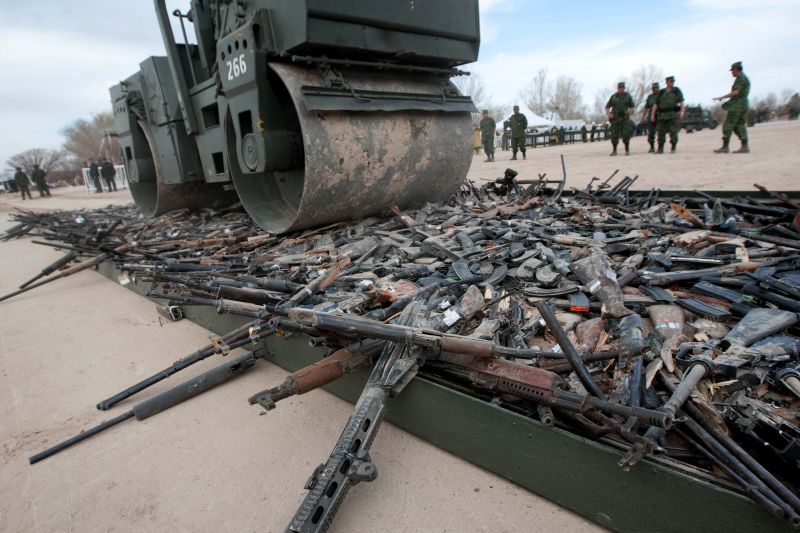
Introduction
A recent article discussing the U.S. Supreme Court’s potential decision to block Mexico’s lawsuit against American gun manufacturers raised several important claims. One specific assertion—that Mexico has only one gun store—has led users to question its accuracy. We conducted a detailed fact-check to verify the validity of this statement and analyze potential misinformation within the article.
Fact-Check Breakdown
Claim #1: “There is only one gun store in all of Mexico.”
The article states, “There is only one gun store in all of Mexico,” suggesting that all legal firearm purchases in Mexico must go through a single location.
This claim is mostly accurate, though it lacks context. Mexico does indeed have only one legal gun store for civilians, the Directorate of Arms and Munitions Sales (Dirección de Comercialización de Armamento y Municiones) in Mexico City, which is operated by the Mexican military. However, this does not mean that firearms are entirely inaccessible. Many illegal firearms enter Mexico through smuggling from the United States, contributing to the proliferation of weapons throughout the country.
According to a 2020 report by the U.S. Government Accountability Office (GAO), about 70% of firearms recovered from crimes in Mexico originated from the U.S. Further, research from Mexico’s Secretariat of National Defense (SEDENA) confirms that while there is a single legal gun retailer, criminal organizations acquire firearms through black-market sales and corrupt channels.

Claim #2: “Between 70% and 90% of guns recovered at crime scenes in Mexico are made in the United States.”
The article states that “between 70% and 90% of guns recovered at crime scenes in Mexico are made in the United States.”
This claim is mostly accurate, based on data tracked by the Bureau of Alcohol, Tobacco, Firearms and Explosives (ATF). According to ATF reports compiled from firearm tracing efforts between 2014 and 2019, about 70% of guns recovered from crime scenes in Mexico were indeed traced back to manufacturers and sellers in the U.S. However, the 90% figure is likely an overstatement, as most reports cap the percentage closer to 70-80%.
Despite this, the claim correctly identifies the significant role American-made firearms play in Mexico’s illegal weapons trade. The data also highlights the challenges Mexican authorities face in controlling arms trafficking across the border.

Claim #3: “The lawsuit seeks to hold the American gun industry accountable for fueling organized crime.”
The article presents this assertion as a legal argument supported by the Mexican government.
While this claim is subject to legal interpretation, Mexico’s lawsuit does argue that U.S. firearm manufacturers knowingly sell weapons that end up in the hands of criminal organizations. However, American gunmakers contend that they follow all existing laws, and the Protection of Lawful Commerce in Arms Act (PLCAA) generally shields them from liability for crimes committed with their products.
The lawsuit hinges on whether gunmakers are directly responsible for cartel firearm access or if criminal smuggling networks bear sole responsibility. The outcome of this case could set a precedent for future legal challenges involving transnational arms sales.

Conclusion
The article’s claim that Mexico has only one gun store is accurate but lacks context, as illicit arms trafficking significantly impacts the country’s firearm availability. Additionally, while the assertion that 70-90% of crime guns in Mexico come from the U.S. is mostly accurate, the upper estimate may be an exaggeration. Finally, the lawsuit’s framing allows for multiple interpretations, making it an inherently disputable claim based on legal perspectives.
Encourage User Action
Questioning the credibility of news articles? Get unbiased fact-checks instantly! Download the DBUNK app today and stay informed.


